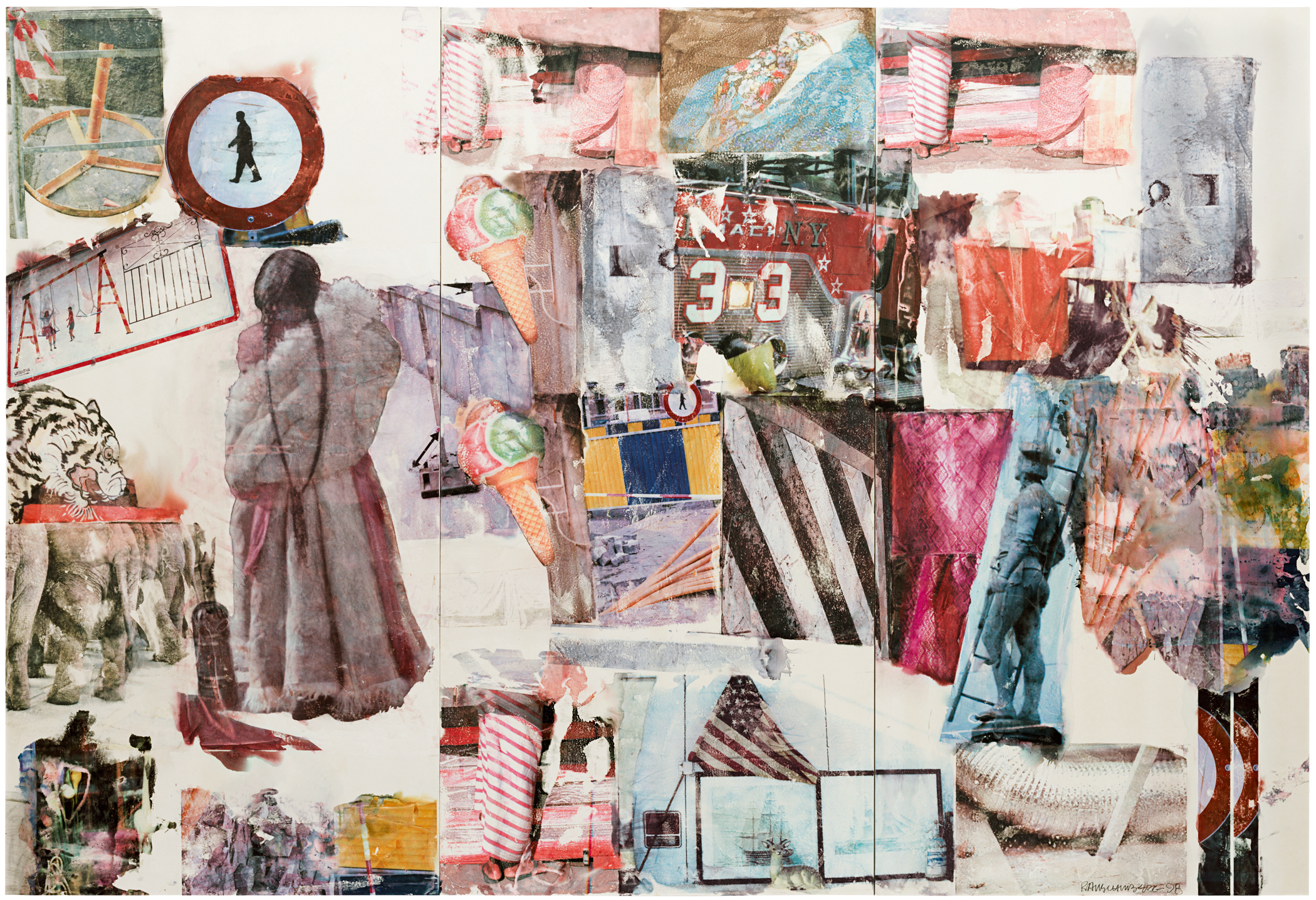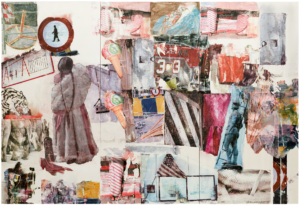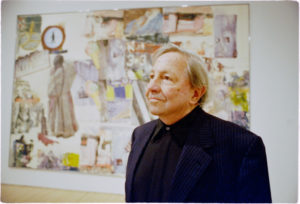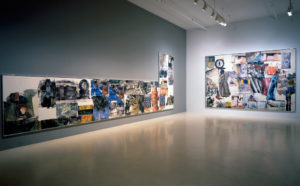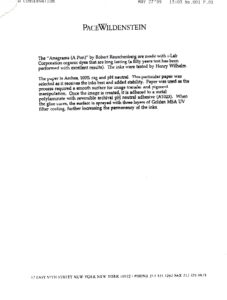Ownership History
San Francisco Museum of Modern Art, purchase through a gift of Phyllis Wattis, 1999
Exhibition History
Robert Rauschenberg: Anagrams (A Pun), PaceWildenstein, New York, March 19–April 17, 1999.
Robert Rauschenberg, San Francisco Museum of Modern Art, May 7–September 7, 1999.
Robert Rauschenberg at SFMOMA, San Francisco Museum of Modern Art, July 27–September 8, 2002.
Treasures of Modern Art: The Legacy of Phyllis Wattis at SFMOMA, San Francisco Museum of Modern Art, January 30–June 24, 2003.
In addition to appearing in the special exhibitions listed above, Port of Entry was shown in SFMOMA’s galleries in 1999, 2000, 2004, 2005, 2009, and 2010 as part of a series of rotating presentations of the permanent collection.
This listing has been reviewed and is complete as of August 31, 2016.
Publication History
Robert Rauschenberg: Anagrams (A Pun) (New York: PaceWildenstein, 1999), n.p. (ill.), cover image.
Kenneth Baker, “Rauschenberg Coup at SFMOMA: ‘Port of Entry’ a Major New Work,” San Francisco Chronicle, May 8, 1999.
David Bonetti, “Rauschenberg Coup Cements SFMOMA’s Ascendance,” San Francisco Examiner, May 21, 1999, (ill.).
Charlie Finch, “Rauschenberg’s Long Goodbye,” Artnet, December 8, 2000 (ill.). Accessed June 23, 2013. https://www.artnet.com/Magazine/reviews/finch/finch12-8-00.asp#6.
Jack Fischer, “SFMOMA’s Best Friend,” San Jose Mercury News, February 9, 2003.
Kenneth Baker, “SFMOMA Approaches Art with Fresh Eye,” San Francisco Chronicle, July 7, 2004, (ill.).
Jack Fischer, “Escaping the Blockbuster Mentality,” San Jose Mercury News, September 26, 2004, (ill.).
Jess Hemerly, “A Sneak Peak at SFMOMA’s New Rooftop Garden,” 7×7, May 6, 2009. Accessed June 23, 2013. https://www.7×7.com/arts/sneak–peak–sfmomas–new–rooftop–garden.
“SFMOMA 75th Anniversary: David White,” interview conducted by Richard Cándida Smith, Sarah Roberts, Peter Samis, and Jill Sterrett, 2009, Regional Oral History Office, The Bancroft Library, University of California, Berkeley, 2010, 44, 59, 69. Accessed June 23, 2013. https://bancroft.berkeley.edu/ROHO/projects/sfmoma/interviews.html.
Mark Getlein and Annabel Howard, eds., Art Visionaries (London: Laurence King Publishing, 2015), 166 (ill.).
This listing has been updated since the launch of the Rauschenberg Research Project and is complete as of August 31, 2016.
